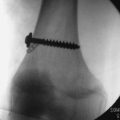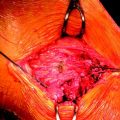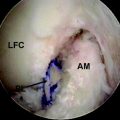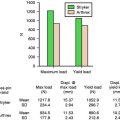Chapter 9 The Economics of Anterior Cruciate Ligament Reconstruction
Institutional Fixed Costs
These costs are a combination of time charges, which reflect fixed costs of operation such as rent, utilities, and staffing, and additional costs associated with the given procedure.1,2 In 1996, Novak et al2 published rates of $12,040 for hospital ACLR with admission, $8815 for hospital ACLR with same-day discharge, and $3853 for surgicenter ACLR. A representative survey of Chicago-area hospitals and surgicenters indicates that current total charges typically vary from $5000 to $12,000 for ACLR. In the following discussion, we will break down the component costs that are additive to the basic institutional time costs.
Anterior Cruciate Ligament Reconstruction–Specific Additive Costs
Allografts
Allografts are increasing rapidly in popularity. A survey of the largest U.S. tissue banks discloses a price range for various ACL allografts of $1400 to more than $3000, with a mean of about $2000 per case. A recently published study3 using patient data from 1996 to 1998 showed allografts at that time to substantially reduce costs by decreasing the likelihood of admission and decreasing surgical time. However, today virtually all ACLR procedures may be performed as outpatient with the use of femoral blocks (see later), so there is little further potential cost savings in this regard from the use of allografts. Even without the use of femoral blocks, ACLR can usually be performed easily on an outpatient basis.
Allograft use will produce slightly decreased costs from reduced operating time due to the absence of a surgical harvest. Experienced surgeons will generally accomplish the harvest in about 10 minutes, but the time may be substantially higher for surgeons who perform the procedure only occasionally. In either case the reduced time will not significantly offset the high cost of the allograft; in addition, there is some diversion of assistant or surgeon time involved in opening, thawing, and washing the allograft. The other potential benefit of allograft use is avoidance of harvest morbidity. This may be significant regarding kneeling pain after bone–patellar tendon–bone (BPTB) harvest. The morbidity for hamstring harvest has been shown to be negligible. Disadvantages with allograft versus autograft use may include lower stability rates4 (see Chapter 69) as well as the small but definite risk of disease transmission.
Fixation Implants
We have surveyed the costs of the fixation implants produced by the major manufacturers of such devices. The cost range of these devices is summarized in Table 9-1. However, discounting of up to 25% below the listed range is common. Interference screws, which are still the most widely used devices, generally cost between $200 and $300 each. The cost differential between metal and bioabsorbable screws has largely disappeared, and most sales today are of the bioabsorbable devices. The former practice of using metal devices as a cost-saving measure is thus generally no longer productive. The tibial post screw stands alone as the least expensive tibial or femoral device, with a cost of less than $100. Some devices are priced as high as $500. In general there is little relationship between the sophistication of the device and its cost, and pricing by the companies would appear to be driven primarily by what the market will bear. Overall, combined tibial and femoral fixation device cost per case will generally be in the range of $400 to $500.
Table 9-1 Economics of Anterior Cruciate Ligament Reconstruction
| Item | Cost Range ($) |
|---|---|
| ACLR implants | |
| Interference screws | 200–300 |
| Tibial fixation: other | 80–500, typically 250 |
| Femoral fixation: other | 95–558, typically 250 |
| Allograft cost | 1400–3000, typically 2000 |
| Total without allograft | 500 |
| Total with allograft | 2500 |
| ACLR surgical costs | |
| Disposables | 300 |
| ACLR tray rentals | 500 |
| Total | 800 |
| Future costs | |
| Navigation | 450 |
| Double bundle | 450 (extra fixation costs) |
| Tissue engineering | Unknown |
| Postoperative costs | |
| Continuous passive motion | >23/day |
| Cold machine | 300 |
| Postoperative brace | 300 |
| Functional brace | |
| Custom | 1500 |
| Shelf | 800 |
| Physical therapy | 1000–3000 |
| Femoral block | 80 |
Anterior Cruciate Ligament Instrumentation Tray Rental
ACL tray rentals vary widely but will often cost the institution about $500.
Total Cost
As is seen from the previous remarks and Table 9-1, disposables, tray rental, and fixation devices will produce an aggregate cost of $1200 per case; the cost is lower for the institution that owns its own ACL guide system. The addition of an allograft will increase the average cost to roughly $3200 per case. Thus, it can be seen that ACLR without allograft falls below total payer payments in virtually all cases, allowing the institution to retain some payment to cover its fixed costs. The addition of an allograft will not be problematic, provided it is separately reimbursed. Thus, from a microeconomic perspective, payer reimbursement of allografts becomes the key factor in preserving solvency.
Postoperative Costs
Femoral Blocks
In the Chicago area, femoral blocks are reimbursed at roughly $60 to $80 per block. They are reimbursed either using a specific Current Procedural Terminology (CPT) code or, more often, as an additional 15 minutes or so of anesthesia time. They have been shown to be highly cost effective by permitting reliable, same-day discharge.4–7 Although same-day discharge is routinely accomplished by most orthopaedic surgeons without the block, the block increases the percentage to nearly 100%, with greatly increased patient comfort. Pain is eliminated as a discharge obstacle, and nausea is also reduced as a discharge obstacle because there is no postoperative narcotic nausea exacerbation. Furthermore, femoral blocks clearly reduce short-term narcotic use after discharge, thus decreasing the incidence of nausea, constipation, and other opioid side effects at home, which can be significant in some patients. The small cost of the block is greatly outweighed by the overall reduced facility costs in allowing patients to leave the hospital expeditiously. The morbidity of these blocks has been negligible.
Cold Machines
Motorized ice-flow machines cost about $300. They are beloved by patients for their pain-relieving properties. The literature, including a meta-analysis, shows their efficacy after ACLR8–10 and total knee arthroplasty.11 However, despite this favorable literature, third-party payers have increasingly refused to pay for motorized ice-flow machines in recent years. In the absence of insurance reimbursement, most patients are not willing to pay out of pocket for them.
Continuous Passive Motion
Continuous passive motion (CPM) is somewhat less commonly used and more difficult to obtain reimbursement for than in prior years. Although early range of motion (ROM) may be improved, studies have failed to show significant benefit regarding ultimate ROM or postsurgical pain in ACLR.12–14 This parallels studies showing little or no long-term benefit after total knee arthroplasty.15–17 This literature has somewhat dampened third-party payer enthusiasm for these devices. The daily cost ranges upward from the Medicare rate of $23.
Future Added Costs
Navigation
Computerized navigation systems have been introduced18,19 but are not currently in widespread use. Their advantage is said to be greater tunnel placement accuracy. It is not clear whether their use will ever be widespread, but if so, they will add both direct cost and increased operative time cost to ACLR. The current cost of bringing in a system for a case is about $450. There is insufficient literature to evaluate relative outcomes with and without navigation. Some believe that the less-expensive option of simple intraoperative radiographs without computerized navigation can also be efficacious.
Double-Bundle Anterior Cruciate Ligament Reconstruction
Double-bundle ACLR is more time consuming than single-bundle cases and thus increases surgical times. It also generally doubles implant costs because two femoral and two tibial implants are needed in most cases—an approximate average increase of $450 per case for fixation implants alone. Early clinical results have been good,20,21 but it is too soon to know whether the benefits are sufficient to justify the increased time, difficulty, and cost. Because many plans do not reimburse invoices at such a low level, the extra implant costs may ultimately be subtracted from the often-thin profit margin of these cases.
Conclusions
1 Curran AC, Park AE, Bach BRJr, et al. Outpatient anterior cruciate ligament reconstruction: an analysis of changes and perioperative complications. Am J Knee Surg. 2001;14:145-151.
2 Novak PJ, Bach BRJr, Bush-Joseph CA, et al. Cost containment: a change comparison of anterior cruciate ligament reconstruction. Arthroscopy. 1996;12:160-164.
3 Cole DW, Ginn TA, Chen GJ, et al. Cost comparison of anterior cruciate ligament reconstruction: autograft versus allograft. Arthroscopy. 2005;21:786-790.
4 Dauri M, Polzoni M, Fabbi E, et al. Comparison of epidural continuous femoral block and intraarticular analgesia after anterior cruciate ligament reconstruction. Acta Anaesthesiol Scand. 2003;47:20-25.
5 Williams BA, Kentor ML, Vogt MT, et al. Economics of nerve block pain management after anterior cruciate ligament reconstruction: potential hospital cost savings via associated postanesthesia care unit bypass and same-day discharge. Anesthesiology. 2004;100:697-706.
6 Edkin BS, Spindler KP, Flanagan JF. Femoral nerve block as an alternative to parenteral narcotics for pain control after anterior cruciate ligament reconstruction. Arthroscopy. 1995;11:404-409.
7 Williams BA, DeRiso BM, Figallo CM, et al. Benchmarking the perioperative process: III. Effects of regional anesthesia clinical pathway techniques on process efficiency and recovery profiles in ambulatory orthopedic surgery. J Clin Anesth. 1998;10:570-578.
8 Raynor MC, Pietrobon R, Guiller U, et al. Cryotherapy after ACL reconstruction: a meta analysis. J Knee Surg. 2005;18:123-129.
9 Barber FA. A comparison of crushed ice and continuous flow cold therapy. Am J Knee Surg. 2000;13:97-101.
10 Barber FA, McGuire DA, Click S. Continuous-flow cold therapy for outpatient anterior cruciate ligament reconstruction. Arthroscopy. 1998;14:130-135.
11 Morsi E. Continuous-flow cold therapy after total knee arthroplasty. J Arthroscopy. 2002;17:718-722.
12 Gaspar L, Farkas C, Szepesi K, et al. Therapeutic value of continuous passive motion after anterior cruciate replacement. Acta Chir Hung. 1997;36:104-105.
13 McCarthy MR, Yates CK, Anderson MA, et al. The effects of immediate continuous passive motion on pain during the inflammatory phase of soft tissue healing following anterior cruciate ligament reconstruction. J Orthop Sports Phys Ther. 1993;17:96-101.
14 Richmond JC, Gladstone J, MacGillivray J. Continuous passive motion after arthroscopy assisted anterior cruciate ligament reconstruction: comparison of short- versus long-term use. Arthroscopy. 1991;7:39-44.
15 Leach W, Reid J, Murphy F. Continuous passive motion following total knee replacement: a prospective randomized trial with follow-up to 1 year. Knee Surg Sports Traumatol Arthrosc. 2006;14:922-926.
16 Denis M, Moffet H, Caron F, et al. Effectiveness of continuous passive motion and conventional phsycial therapy after total knee arthroplasty: a randomized clinical trial. Phys Ther. 2006;86:174-185.
17 Lau SK, Chin KY. Use of continuous passive motion after total knee arthroplasty. J Arthroplasty. 2001;16:336-339.
18 Plaweski S, Cazal J, Rosell P, et al. Anterior cruciate ligament reconstruction using navigation: a comparative study on 60 patients. Am J Sports Med. 2006;34:542-552.
19 Hiraoka H, Kuribayashi S, Fukuda A, et al. Endoscopic anterior cruciate ligament reconstruction using a computer-assisted fluoroscopic navigation system. J Orthop Sci. 2006;11:159-166.
20 Muneta T, Koga H, Morito T. A retrospective study of the midterm outcome of two-bundle anterior cruciate ligament reconstruction using quadrupled semitendinosus tendon in comparison with one-bundle reconstruction. Arthroscopy. 2006;22:252-258.
21 Yasuda K, Kondo E, Ichiyama H, et al. Clinical evaluation of anatomic double-bundle anterior cruciate ligament reconstruction procedure using hamstring tendon grafts: comparisons among three different procedures. Arthroscopy. 2006;22:240-251.
22 Ju YJ, Tohyama H, Kondo E, et al. Effects of local administration of vascular endothelial growth factor on properties of the in situ frozen-thawed anterior cruciate ligament in rabbits. Am J Sports Med. 2006;34:84-91.
23 Yamazaki S, Yasuda K, Tomita F, et al. The effect of transforming growth factor-beta1 on intraosseous healing of flexor tendon autograft replacement of the anterior cruciate ligament in dogs. Arthroscopy. 2005;21:1034-1041.







